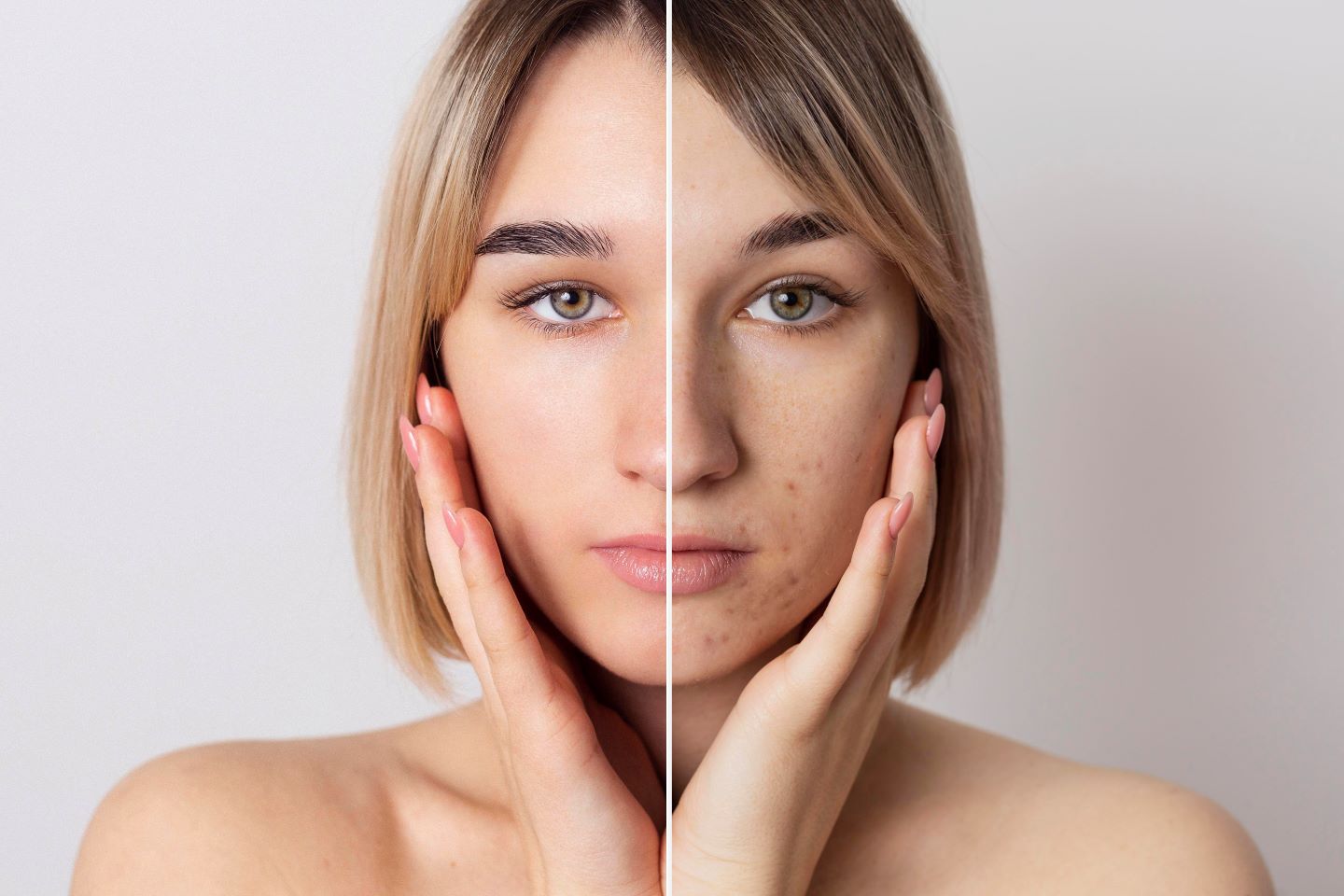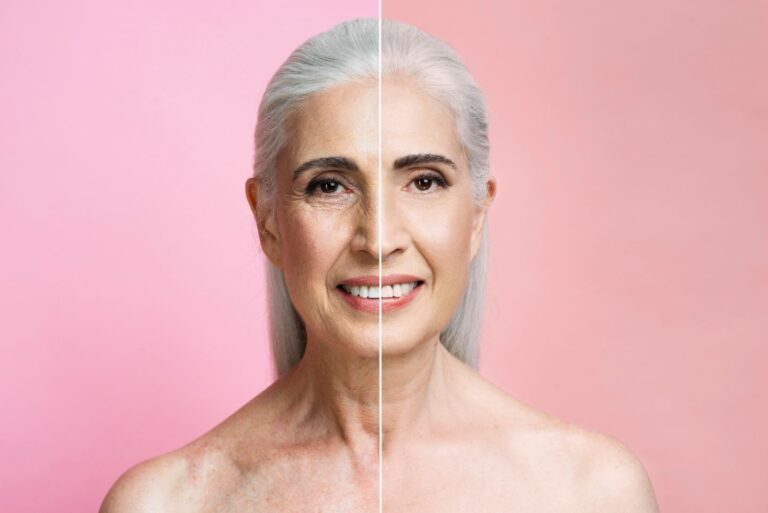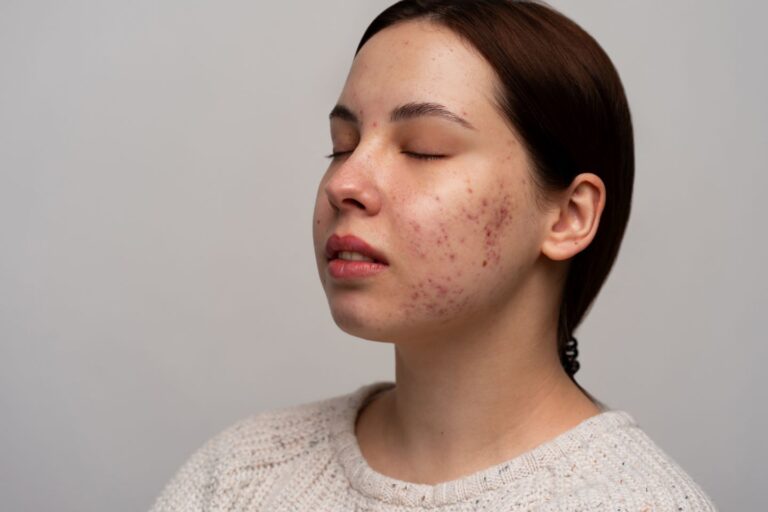Dermaplaning Before and After: Tips for Better Skin Health

A common technique for getting a smoother, more radiant complexion is dermaplaning, a skin treatment that sounds scarier than it is. Using a sterile surgical scalpel, the uppermost layer of skin and fine vellus hair, commonly referred to as peach fuzz, are carefully scraped away in this straightforward but effective cosmetic operation. Although the idea of a blade sliding across the face could make one uneasy, when done by a trained expert, the procedure is incredibly mild and painless.
Dermaplaning Before and After
Dermaplaning can result in a remarkable metamorphosis that has both immediate and long-term advantages. Let’s examine the skin’s before and after dermaplaning conditions in order to understand its significance altogether.
Before Dermaplaning
Many people struggle with different skin problems that might take away from the natural attractiveness of their complexion before having dermaplaning. Typical worries consist of:
- Dull, Lifeless Skin: Dead skin cells build up on the surface of the skin over time, giving the appearance of worn, lifeless skin.
- Uneven Skin Tone and Texture: The overall texture and look of the skin are impacted by blemishes, fine wrinkles, and rough spots, which add to an uneven skin surface.
- Clogged Pores and Minor Acne Breakouts: Blackheads, whiteheads, and mild breakouts of acne can be caused by clogged pores, which are caused by an accumulation of dead skin cells and sebum.
- Peach Fuzz: Although vellus hair is expected, some people find that it obstructs the application of makeup, making it look uneven or cakey.
Because of these problems, which can make the skin look older and less vibrant, many people look to dermaplaning as a way to rejuvenate their complexion.
After Dermaplaning
Dermaplaning can have rather dramatic short- and long-term effects while providing the skin with a number of aesthetic and health benefits. After having dermaplaning, patients frequently observe:
- Radiant, Glowing Skin: Dermaplaning exposes the younger, healthier skin underneath by eliminating the topmost layer of dead skin cells. The skin has a beautiful, natural glow due to the smoother and more reflecting nature of this freshly revealed layer.
- Better Skin Texture and Tone: The process helps to lessen the visibility of acne scars, smooth out minor wrinkles, and provide a more even skin tone. A more even, smoother complexion is the result.
- Improved Product Absorption: Skincare products can enter the skin more deeply and successfully when dead skin and surface particles are removed. This implies that treatments, serums, and moisturizers perform better and offer more significant advantages.
- Smoother Application of Makeup: Makeup applies more easily and settles more comfortably on the skin, giving a perfect finish when dead skin cells and peach fuzz are absent.
- Reduced Pore Appearance: Dermaplaning removes extra oil and dead skin from the pore openings, which can make them appear smaller even if it doesn’t alter the size of the pores.
Safety and Considerations in Dermaplaning
Even though dermaplaning is usually safe for most skin types, it’s essential to speak with a specialist to find out if it’s the best option for your skin, particularly if you have sensitive skin, active acne, or other skin disorders. To guarantee the most significant outcomes and reduce dangers, the operation should always be carried out by a licensed medical practitioner, dermatologist, or esthetician.
Post-Treatment Care for Better Skin Health
The skin may be more sun-sensitive after dermaplaning; therefore, it’s essential to use a broad-spectrum sunscreen every day. To preserve the benefits and promote skin health, it’s also critical to adhere to any particular aftercare recommendations given by your skincare specialist.
Pros and Cons of Dermaplaning (Exfoliation)
Dermaplaning, a popular exfoliation method in the realm of skincare, comes with its set of pros and cons. Like any cosmetic procedure, the decision to undergo dermaplaning should be made with an understanding of both its potential benefits and drawbacks.
Pros of Dermaplaning:
- Exfoliation: Dermaplaning effectively removes the top layer of dead skin cells, promoting a smoother and more radiant complexion. This exfoliation can improve the texture of the skin and contribute to a healthy glow.
- Hair Removal: In addition to exfoliating the skin, dermaplaning removes fine vellus hair, commonly known as peach fuzz. This can create a smoother canvas for makeup application and enhance the overall appearance of the skin.
- Instant Results: Unlike some other skincare treatments that require multiple sessions for noticeable effects, dermaplaning often provides immediate results. Clients often leave the session with visibly smoother and brighter skin.
- Product Absorption: With the removal of dead skin cells and fine hair, skincare products can penetrate more effectively, maximizing their benefits for hydration, anti-aging, and other targeted concerns.
- Minimal Downtime: Dermaplaning is a non-invasive procedure that typically involves minimal downtime. Clients can return to their usual activities right after the procedure.
- Safe for Most Skin Types: Dermaplaning is generally safe for various skin types, including sensitive skin, as it does not involve the use of chemicals or harsh abrasives.
Cons of Dermaplaning:
- Temporary Results: While dermaplaning provides immediate improvements in skin texture and radiance, the results are temporary. Regular sessions are often recommended to maintain the benefits.
- Not Suitable for Active Acne: Dermaplaning is not recommended for individuals with active acne or inflamed skin. The procedure can potentially exacerbate acne and spread bacteria, leading to more breakouts.
- Risk of Nicks or Cuts: The use of a sharp scalpel during dermaplaning carries a slight risk of nicks or cuts, particularly if the procedure is not performed by a skilled and experienced professional.
- Potential for Irritation: Some individuals may experience redness or irritation after dermaplaning, especially those with sensitive skin. Proper post-treatment care, including sun protection, is crucial to minimize potential side effects.
- Limited Impact on Deeper Skin Issues: While dermaplaning can improve the appearance of the skin’s surface, it may have limited effectiveness in addressing deeper skin concerns such as deep wrinkles, scars, or significant hyperpigmentation.
- Cost Considerations: The cost of dermaplaning sessions can add up over time, especially if it is part of a regular skincare routine. Individuals should consider their budget and the ongoing nature of the treatment.
Conclusion: Dermaplaning Before and After
With dermaplaning, you may revitalize your skin without going under the knife and get rid of unsightly facial hair, uneven texture, and dullness. The outermost layers of skin are meticulously removed to reveal a complexion that is smoother, more radiant, and fresher underneath. The benefits of dermaplaning can be substantial and fulfilling, whether the goal is to attain a flawless cosmetics application or to increase the efficacy of skincare products. As with any cosmetic operation, getting expert advice is essential to guaranteeing results and safety.




